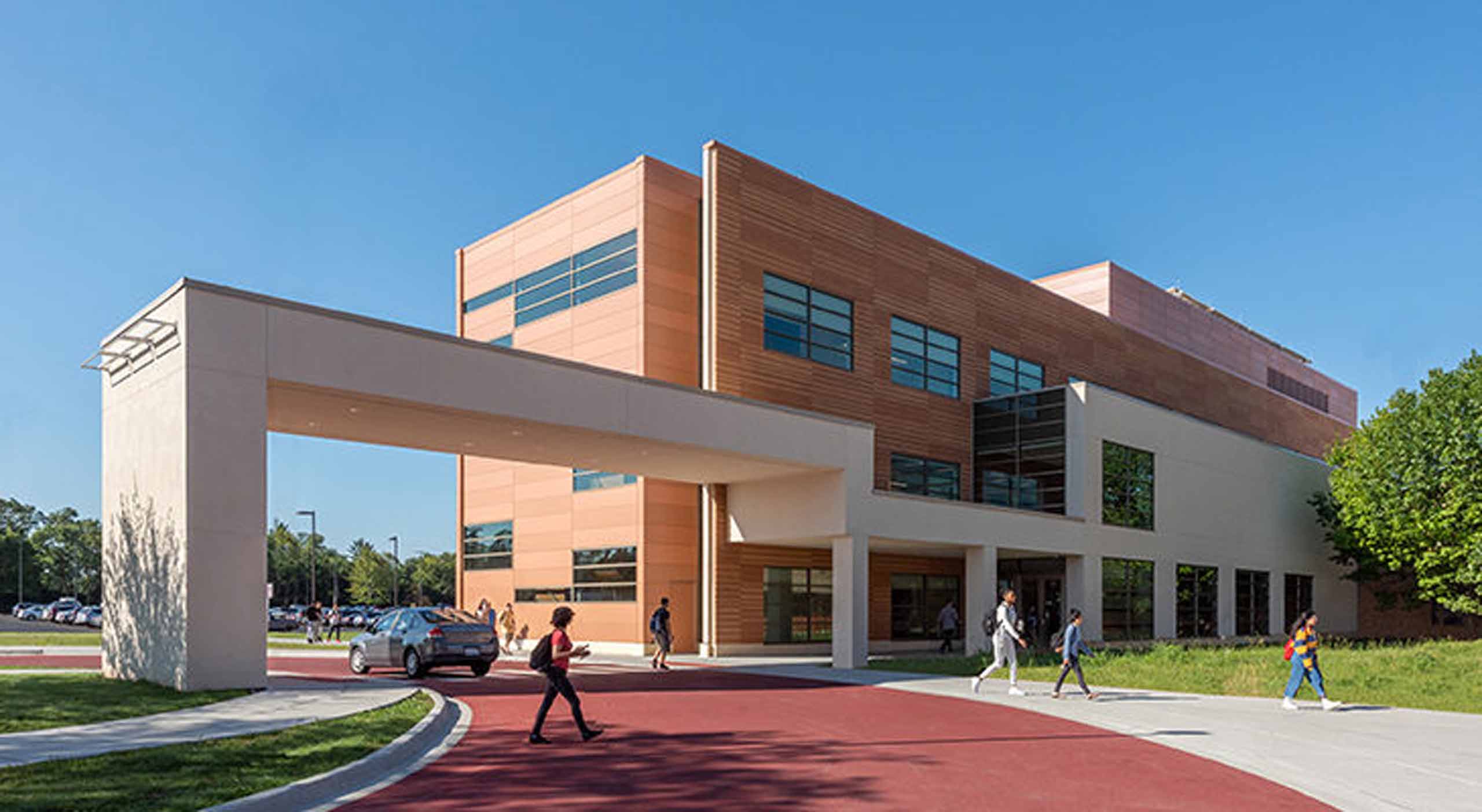
Architectural award extends the College of Lake County’s reputation for sustainable leadership.
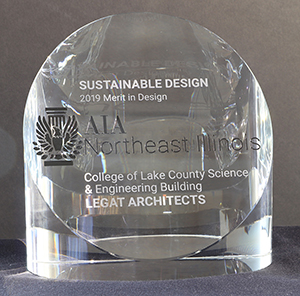
One stop along the College of Lake County’s Living Lab Trail is the light-filled atrium within the campus’s newest facility: the Science & Engineering Building. Signs along the trail educate visitors about the building’s sustainable features, including a geothermal field whose underground wells help heat and cool the building, 187 rooftop solar panels to power parts of the facility, and a rainwater collection system that provides water for flushing toilets.
These features and the overall design of the building add a notch to the college’s sustainable reputation when the building became the sole winner in the Sustainable Design category of the American Institute of Architects’ Northeast Illinois Chapter’s 2019 Design Awards. The biennial competition recognizes “the outstanding ability of our members and proclaims to our community that architecture can be the most significant form of art, enhancing the quality of our lives.”

On October 17, representatives from CLC, the Illinois Capital Development Board, Legat, and Affiliated Engineers accepted the award during a ceremony at the Morton Arboretum in Lisle, Illinois.
The 42,000-square-foot facility, designed by Legat Architects and Brubaker Design, opened in January 2018. It received LEED Platinum certification, the U.S. Green Building Council’s highest ranking for “healthy, highly efficient, and cost-saving green buildings.” Its first-floor engineering labs include mechatronics, laser, photonics, and optics. Floors two and three house five chemistry labs, chemistry storage and prep areas, and two instrument labs.
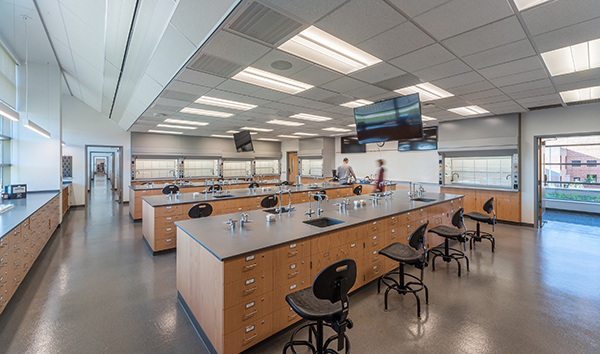
The award extends the college’s reputation for sustainable achievements and green initiatives. The Chronicle of Higher Education recently included the college in its list of “Top Institutions for Sustainability, 2019.” Among “associate institutions,” CLC ranks seventh in North America, sixth in the U.S., and second in the Midwest. The list is based on the Association for the Advancement of Sustainability in Higher Education’s 2019 Sustainable Campus Index, which “recognizes top-performing colleges in 17 distinct aspects of sustainability and overall.”
“People love the building,” said CLC’s Sustainability Manager David Husemoller. “They comment quite a bit about the natural light and talk about how it makes them feel more happy, awake, and energized.”
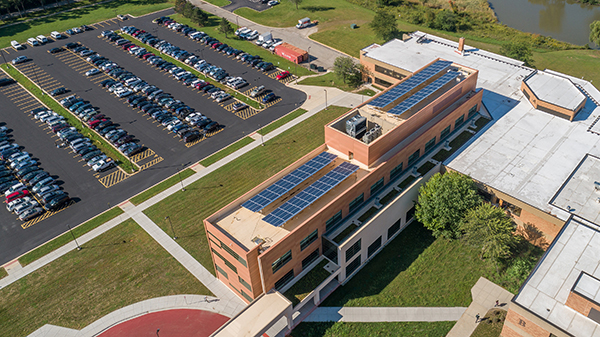
As the new main southeast entrance to the campus, the Science & Engineering Building houses sustainable technologies that reduce annual energy consumption by 66 percent compared to a baseline building of similar size.
“The building was oriented east-west with ribbon windows facing south to take advantage of sun angles,” said Legat’s Scot Parker, project manager. “This also allowed for the main entrance point to be moved closer east near major parking areas.”
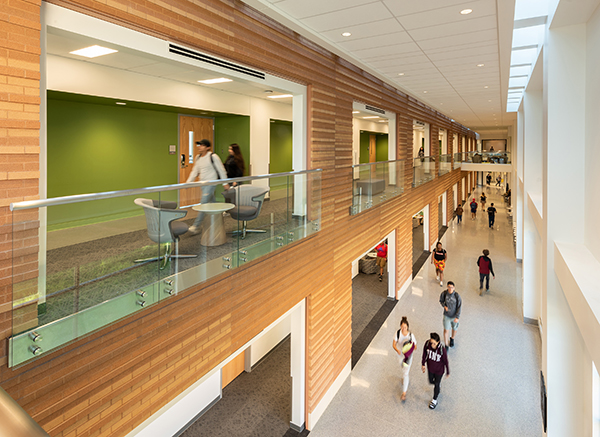
The facility’s geothermal system connects to 47 wells buried 500 feet below ground. It draws from the earth’s constant temperature to provide 90 percent of the building’s heating and cooling load, significantly decreasing energy costs.
According to Husemoller, “The geothermal system has far outperformed its expectations, with the backup boilers feeling a little cheated—they weren’t needed until the coldest of the polar vortex days last year.”
Get the full story on the Science and Engineering Building.
Contact Legat Architects to learn more about sustainable higher education design or comment below to share your thoughts on this post.


